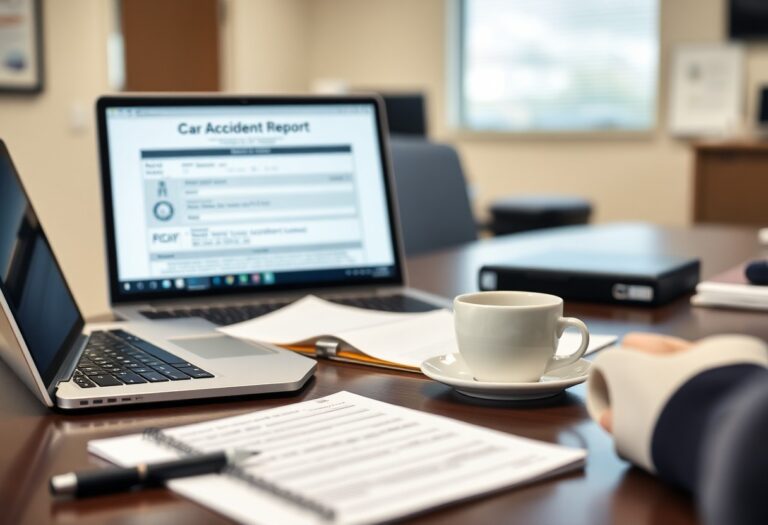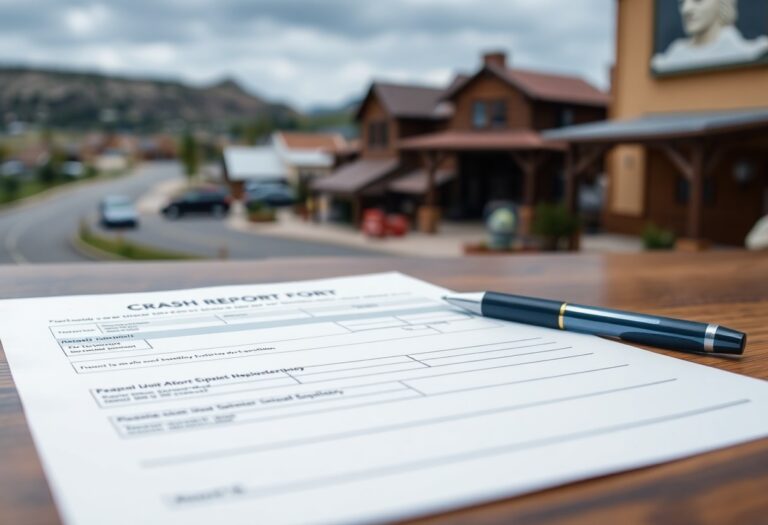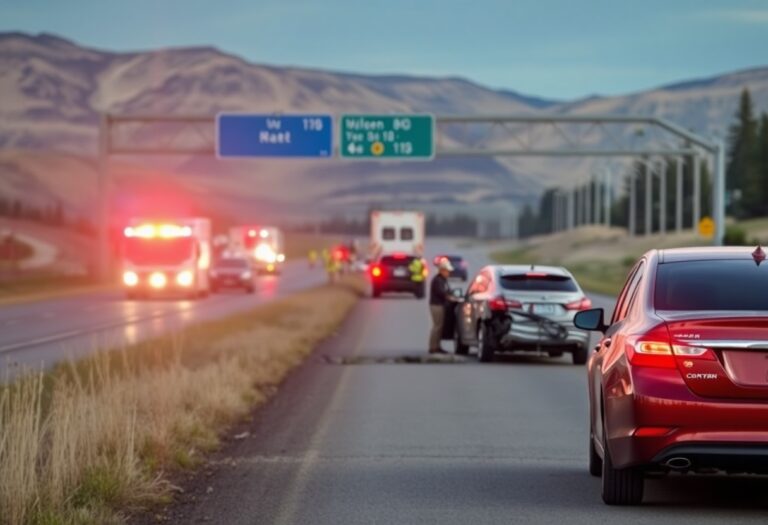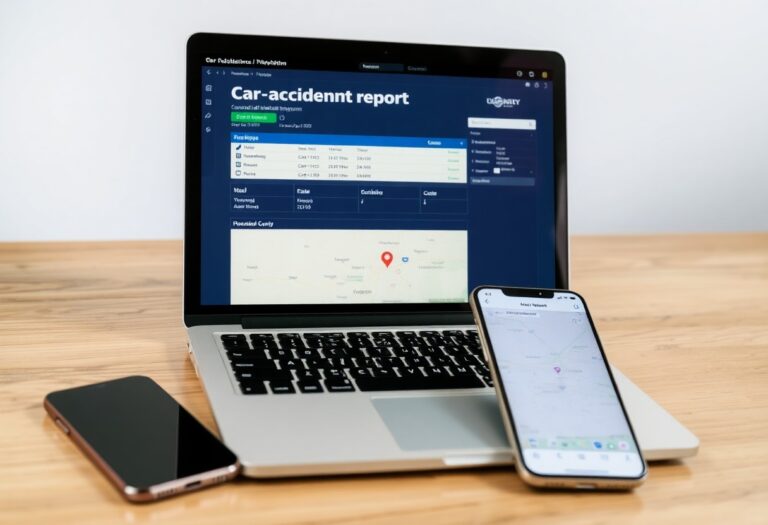You may find yourself in a stressful situation after a car accident, but understanding how to file a report in Cooke County, Texas will help ease the burden. This guide provides you with detailed steps to obtain the necessary documentation quickly and efficiently. From gathering crucial information at the accident scene to submitting your report to the appropriate authorities, you’ll learn how to navigate the process with confidence. Taking these steps will ensure you are prepared and protected following an incident on the road.
The Legal Framework for Car Accident Reporting in Cooke County
Understanding the legal framework surrounding car accident reporting in Cooke County is vital for every driver. This framework not only dictates how and when you must report an accident but also outlines the responsibilities all drivers have in the aftermath of a collision. Familiarizing yourself with both state and local regulations ensures that you safeguard your rights and follow the necessary procedures to support any potential claims or legal actions.
Texas State Laws Regarding Accident Reporting
In Texas, state law requires that you report a car accident if it results in injury, death, or property damage exceeding $1,000. You must file a report with the Texas Department of Transportation within 10 days of the incident. This report serves as an official record and is vital if disputes arise regarding fault or damages.
Local Regulations Specific to Cooke County
Cooke County follows Texas state reporting requirements, but it also has specific local regulations. Local law enforcement agencies often have their own procedures, and it is advisable to contact them to ensure you’re following all mandated reporting processes after an accident.
Additionally, local authorities in Cooke County may have resources or guidelines to assist you further. For example, if you’ve been involved in an accident, the Cooke County Sheriff’s Office may provide forms and detailed instructions tailored to local practices. Taking the time to consult these resources empowers you to navigate the aftermath of an accident more effectively while ensuring compliance with all local requirements.
Gathering Critical Information Immediately After an Accident
After a car accident, gathering critical information promptly can significantly influence the reporting process and any potential claims. Begin by ensuring everyone’s safety, then document the date, time, and location of the incident. Capture the details of all vehicles involved, including make, model, and license plate numbers, along with any visible damages. Your attentiveness during this chaotic time can aid in establishing the facts for insurance companies and legal proceedings.
Essential Details to Document at the Scene
Collecting crucial details such as driver’s names, contact information, and insurance details is vital. Take photographs of the scene, signs, and vehicle positions to create a visual record of the incident. Additionally, jotting down the conditions of the road and weather can provide context that may be relevant to your case. Each detail builds a clearer picture of what transpired.
The Importance of Witness Statements
Witness statements are invaluable in substantiating your account of the accident. These objective perspectives can offer clarity to disputes regarding fault and understanding of the incident timeline. Having unbiased testimonies backing your claims can become a powerful tool in negotiating with insurance companies and within legal proceedings.
Securing witness statements involves more than just asking for a person’s account of the event. You should aim to collect their full names, contact information, and a brief summary of what they observed. Their observations may highlight facts you missed or confirm your version of events. In some cases, eyewitness testimonies can sway the outcome of a claim significantly, providing an crucial edge in your favor when dealing with insurance adjusters or legal representatives.
Completing the Accident Report: A Step-by-Step Guide
| Step | Action |
| 1 | Gather important documents such as driver’s license, vehicle registration, and insurance information. |
| 2 | Use the Texas Peace Officer’s Crash Report Form for detailed documentation. |
| 3 | Accurately complete all required fields, ensuring clarity and accuracy. |
| 4 | Submit your final report to the appropriate authorities, typically the local police department. |
| 5 | Request a copy of the report for your records and future reference. |
Using the Texas Peace Officer’s Crash Report Form
The Texas Peace Officer’s Crash Report Form is your primary tool for documenting the accident. Familiarize yourself with the layout of the form, which includes sections for driver information, vehicle details, and a narrative of the incident. Fill out each section carefully; this helps establish facts and may aid in future claims or legal proceedings. Incomplete or unclear forms can lead to delays or issues with investigations.
Common Mistakes to Avoid in Reporting
Filling out an accident report might seem straightforward, but several common mistakes can complicate matters. Ensure that all information is accurate, including names, addresses, and insurance details. Providing vague descriptions of the incident or omitting key facts can lead to misunderstandings later. Also, avoid making assumptions about fault at this stage; it’s best to let the authorities and insurance companies clarify the details.
Errors such as misidentifying witnesses or failing to include all involved parties can hinder your claim process. Additionally, inconsistencies in your report compared to other accounts might raise questions about credibility. It’s wise to double-check all details before submitting the report, as errors can result in legal challenges or increased insurance premiums. A thorough, accurate report not only reflects well on you but can also enhance the likelihood of a fair resolution.
Submitting Your Report and Follow-Up Actions
Once your accident report is complete, the next step is to submit it to the appropriate authorities and understand the follow-up actions required. Timeliness is vital, as submitting your report promptly may assist with insurance claims and legal processes. After submission, staying informed on your report’s status and understanding what comes next will help you navigate any potential challenges effectively.
Where and How to Submit Your Report in Cooke County
You can submit your completed accident report in Cooke County to the local law enforcement agency that responded to the incident. Typically, this can be done in person at the police department or sheriff’s office. Alternatively, some reports may be submitted online, depending on the department’s capabilities. Always check for any required fees or additional documents that may need to accompany your submission.
Understanding the Timeline for Processing Your Report
The processing timeline for your accident report can vary based on the complexity of the incident and the workload of the local authorities. Generally, reports are processed within 10 to 15 business days after submission. Factors like additional investigations, insurance inquiries, and follow-up statements can extend this timeline, so it’s wise to follow up if you haven’t received updates within that period.
Patience is key as the authorities handle various cases simultaneously. If your report is still pending after two weeks, reaching out to the local department can give you insights into any hold-ups or additional information required. You have the right to request a copy of your report for personal records and insurance purposes, which can significantly aid in managing any ensuing claims or disputes related to the accident.
Navigating Insurance Claims With Your Accident Report
Your accident report serves as a vital document in navigating the insurance claims process. Insurers rely on the details within the report to determine liability, assess damages, and establish compensation amounts. A thorough and accurate report can streamline your claim, while any discrepancies might delay the process or lead to a reduced payout. Understanding how to leverage your accident report effectively can significantly enhance your chances of a favorable resolution.
How the Report Impacts Your Claim Process
The accident report plays a pivotal role in your claim process. It provides a factual basis for your case, documenting key elements such as date, time, location, and the parties involved in the accident. Insurers use this information to evaluate claims. Inconsistencies or incomplete reports may raise red flags or even result in claim denials. A strong report substantiates your position and speeds up settlements.
Tips for Communicating with Your Insurance Adjuster
Effective communication with your insurance adjuster can significantly influence the outcome of your claim. Start by clearly articulating the details of your accident while remaining concise. Avoid speculation about fault and stick to the facts as presented in your accident report. Share important documentation, including medical records and expenses, while maintaining a professional tone. Consistent and timely responses to their inquiries also reflect your commitment to the process, fostering a collaborative environment.
- Your accident report should be your go-to document when discussing your claim.
- Provide clear and honest communication to your insurance adjuster.
- Keep track of all documentation related to medical records and expenses.
- Recognizing the importance of a professional tone can go a long way in facilitating your claim.
To enhance your communication with the insurance adjuster, maintain organized records of all conversations and correspondence. This includes the names of the people you spoke with, the dates of meetings, and summaries of discussions. This meticulous approach not only reinforces your credibility but also gives you leverage should discrepancies arise later. Be proactive in following up, as it shows your dedication to resolving the matter efficiently.
- Use organized records to track all communications.
- Prepare a summary of discussions to provide context in follow-ups.
- A proactive approach ensures that your dedication and engagement are evident.
- Recognizing these strategies can help put you in a stronger position with your claim.
Conclusion
With these considerations, you are better prepared to navigate the process of obtaining a car accident report in Cooke County, Texas. By understanding the necessary steps and gathering the required documentation, you can efficiently secure your report and handle any related matters. Whether it’s for insurance purposes or legal inquiries, following these guidelines will help you ensure that you have the information you need at your fingertips.













